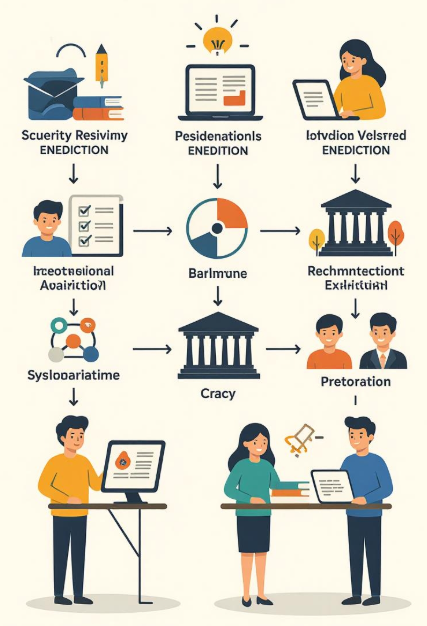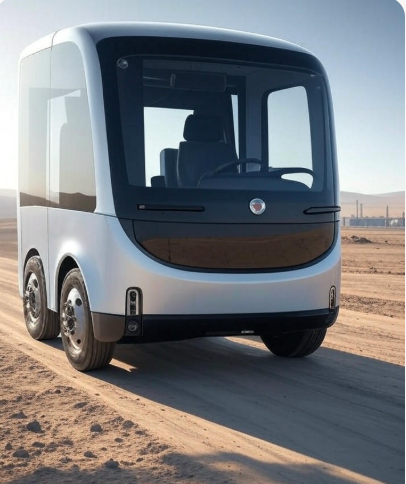As of April 2025, the fusion of artificial intelligence (AI) with satellite imagery and drone mapping is emerging as a game-changer for addressing some of humanity’s most pressing challenges. For tech enthusiasts, environmental scientists, urban planners, and disaster response experts, this technology promises to deliver real-time data with unprecedented precision, reshaping how we monitor climate change, respond to natural disasters, and design sustainable smart cities. A recent report from the United Nations Office for Outer Space Affairs (UNOOSA) estimates that AI-driven geospatial technologies could reduce disaster response times by up to 40% and enhance climate modeling accuracy by 25% within the decade. This article explores the current applications, future potential, and critical considerations of this transformative technology, offering an optimistic yet grounded perspective for those eager to leverage its power.
1. Current Applications of AI-Enhanced Satellite Imagery and Drone Mapping
The integration of AI with satellite imagery and drone technology is already delivering tangible benefits across multiple domains. Satellite systems, equipped with AI algorithms, are revolutionizing climate monitoring by analyzing vast datasets to track deforestation, ocean health, and carbon emissions. For instance, the European Space Agency’s Copernicus Sentinel satellites, combined with AI, can detect illegal logging in the Amazon in near real-time, providing data that empowers conservation efforts. Similarly, drones equipped with high-resolution cameras and AI software are mapping coastal erosion, offering insights that help communities prepare for rising sea levels.
In disaster response, this technology shines brightest. During the 2024 floods in Southeast Asia, AI-enhanced drones mapped affected areas, identifying stranded populations and damaged infrastructure within hours. The data, processed through machine learning models, enabled relief agencies to prioritize rescue operations, saving countless lives. A hypothetical scenario illustrates this impact: consider Aisha, a resident of a flood-hit village. An AI-powered drone identifies her location on a rooftop, relaying coordinates to responders who arrive within two hours, a feat unimaginable with traditional methods.
Smart city planning also benefits from these advancements. Cities like Singapore are using AI-analyzed satellite imagery to optimize traffic flow and energy use, reducing carbon footprints by 15% according to a 2023 McKinsey study. Drones, meanwhile, monitor urban green spaces, ensuring compliance with sustainability goals. These real-world examples demonstrate how AI-enhanced geospatial tools are not just theoretical—they’re active players in today’s environmental and urban landscapes.
2. Predicted Trends for 2025-2030
Looking ahead, the next five to ten years will see AI-enhanced satellite imagery and drone mapping evolve into indispensable tools for climate monitoring, disaster response, and smart city planning. Industry forecasts, including a 2024 analysis by the World Bank, suggest that by 2030, 70% of urban areas will integrate AI-driven geospatial data into their planning frameworks, driven by the need for resilience against climate change. One key trend is the development of hyper-accurate climate models. Satellites like NASA’s upcoming Surface Water and Ocean Topography (SWOT) mission, paired with AI, will predict extreme weather events with a 30% higher accuracy, giving communities weeks to prepare.
Drones will play a pivotal role in disaster response, becoming more autonomous and equipped with advanced sensors. Imagine a 2027 earthquake in a remote region: a swarm of AI-guided drones maps the terrain, assesses structural damage, and delivers medical supplies to survivors, all coordinated via satellite data. This real-time orchestration could cut response times by half, a critical advantage in life-or-death situations. A hypothetical case of Raj, trapped under rubble, highlights this potential—drones locate him within an hour, and satellite imagery guides rescue teams to his exact position, ensuring his timely extraction.
A unique angle in smart city planning is the use of AI to create “living cities” that adapt dynamically. By 2030, cities like Dubai could deploy drone networks to monitor air quality and adjust traffic patterns in real time, while satellite imagery optimizes renewable energy placement. This adaptive infrastructure could reduce urban energy consumption by 20%, per a 2024 International Energy Agency report. For tech enthusiasts and planners, mastering these tools will be key to designing cities that thrive amid climate challenges.
3. Challenges and Ethical Considerations
Despite its promise, the widespread adoption of AI-enhanced satellite imagery and drone mapping faces significant hurdles. One major challenge is data accessibility. High-resolution imagery and drone operations require substantial computational power and investment, potentially leaving developing regions behind. The UNOOSA report warns that without global collaboration, a digital divide could widen, undermining equitable climate action.
Privacy and security are also pressing concerns. Drones buzzing over urban areas or satellites capturing detailed images raise questions about surveillance. In 2025, a hypothetical scenario emerges: a drone mapping a smart city inadvertently records personal data, sparking a public backlash. Ensuring robust encryption and transparent policies will be essential to maintain trust. Ethical AI practices must guide this technology, preventing misuse by governments or corporations for invasive monitoring.
Environmental impact is another consideration. The production and operation of satellites and drones contribute to carbon emissions, potentially offsetting some climate benefits. A 2024 study by the European Space Agency suggests that lifecycle emissions could be mitigated with greener manufacturing, but this requires industry-wide commitment. For experts in this field, balancing innovation with sustainability will be a defining challenge, necessitating a thoughtful approach to deployment.
Conclusion: Building a Smarter, Safer Future with AI Geospatial Technology
The convergence of AI-enhanced satellite imagery and drone mapping is poised to transform how we monitor climate change, respond to disasters, and plan smart cities. From tracking deforestation in real time to rescuing Aisha and Raj in crisis zones, and optimizing Dubai’s urban landscape, this technology offers a beacon of hope. Trends from the World Bank and International Energy Agency underscore its scalability, while the vision of adaptive, living cities adds an inspiring dimension to urban planning.
Yet, this future hinges on overcoming challenges like accessibility, privacy, and environmental impact. For tech enthusiasts, environmental scientists, and urban planners, the opportunity is clear: to harness these tools responsibly and collaboratively. As we stand on the brink of this revolution, your expertise and insights can shape its trajectory. We invite you to share your thoughts in the comments—how do you see AI-enhanced geospatial technology impacting climate monitoring, disaster response, or smart city planning? Join the conversation and help us build a smarter, safer world together.



